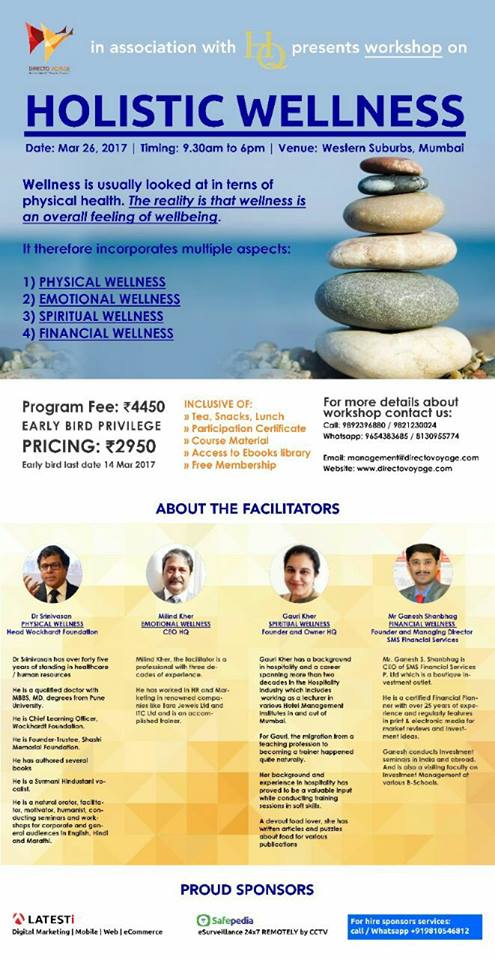As per a report by the IBM Smarter Workforce Institute and Globoforce’s Work Human® Research Institute, employees who experience a sense of belonging, purpose, achievement, happiness and vigour are more likely to perform at higher levels and contribute “above and beyond” expectations.
More than 50% big corporate brands believe that employees’ safety and wellness – physical, psychological and emotional – is their priority even as the apocalyptic spread of the Covid-19 pandemic has disrupted life and businesses alike in India and elsewhere. Change is never easy, and in unprecedented times like these, it is all the more important for leaders to look at ensuring they have a workforce that is willing to give in their best no matter what the situation is
In context to same, Skill Outlook had an interaction with Mr Subramanyam S, founder, president and CEO of AscentHR
Question #1: Why is employee experience even more critical in times of crisis?
The crisis has had its share of impacting the minds of the workforce with a high degree of anxiety. The impact on stress, burnout, emotional and mental state of an employeeis taking a toll on the wellbeing. In addition, the enforced WFH for example, added to the issues of well being in terms of employees finding it difficult to adapt. Challenges emerged with respect to managing work & personal obligations, task differentiation, time allocation to take it to completion. All of this and many more, has its quantum of impact on the performance of employees, brining employee experience to the forefront.
As workforce drive business outcomes, it is important to raise the focus on “Employee Experience”. While it is a vast subject, it is important for organisations to approach it in a wholistic manner as it will secure all the contributions of the workforce, better manage the area of attracting & retaining talent and support in manging the growth plans of the organisation.
Question #2: What strategies organizations are following in order to ensure enhanced employee experience?
Organisations are embarking upon tactical and strategic initiatives. They are leveraging the technology and tools for enabling Socially connect, Update Broadcasts, Virtual town hall for management connect, Friday Fun enablers, Tea Time Teams Gossips and more. In addition, many have enabled wellness windows thru subscriptions, in addition to extending health care facilities. Anywhere, Anytime Learning, Remote onboarding, online induction is a couple of other initiatives. In the approach to understand and take appropriate actions, organisation include dimensions such as business agility, purpose alignment across, job-goals-growth paths, flexible timings, coaching, transparent feedback, R&R, safety and wellness aspects.
EX is measurable. A holistic approach to improve EX maturity in an organisation would stand the long tail. Rather than using old fashion onetime survey activity, continuous engagement to feel the pulse, the sentiment of the employee and decide on interventions, is possible now due to tech enabled apps. It would be wise, to establish present level of the maturity and them move ahead, making continuous improvements on all the areas that impact to deliver a consumer experience.
Question #3 : How should organizations work on creating an ideal employee experience especially for the distributed and gig workforce?
Due to the difference in the engagement model the approaches will have to factor few changes. Consideration should include quick alignment of the organisations hygiene factors, clarity of contribution factors& outcomes, simple, data drive short cycle for performance reviews; supporting environmentand distributed work environment relevant policy enablement.
Hard factors like exclusive employment policies may have to be revisited. Assignment based relationships are emerging and the need for short term engagements are rising which can be leveraged with an agile policy frame work.
Question #4: What steps to be taken with regards to – travel restrictions, work-from-home policy, ways of working, health precautions, communication plan, and business continuity?
On a continuous basis, remind and ensure adherence of the government recommended guidelines with respect to travel, health and community behaviour. Every travel necessity has to be examined, critically. Enforce periodic health checks. WFH policies will have to be agile, inclusive in natureand keep evolvingconsidering the nature of business. Free mind delivers better outcomes.
Communication is a key to success,an exhaustive plan has to embarked upon factoring frequency, format, multi- method, encompassing senior management messages all the way upto policy notification and it would support business operations of the present and future.







